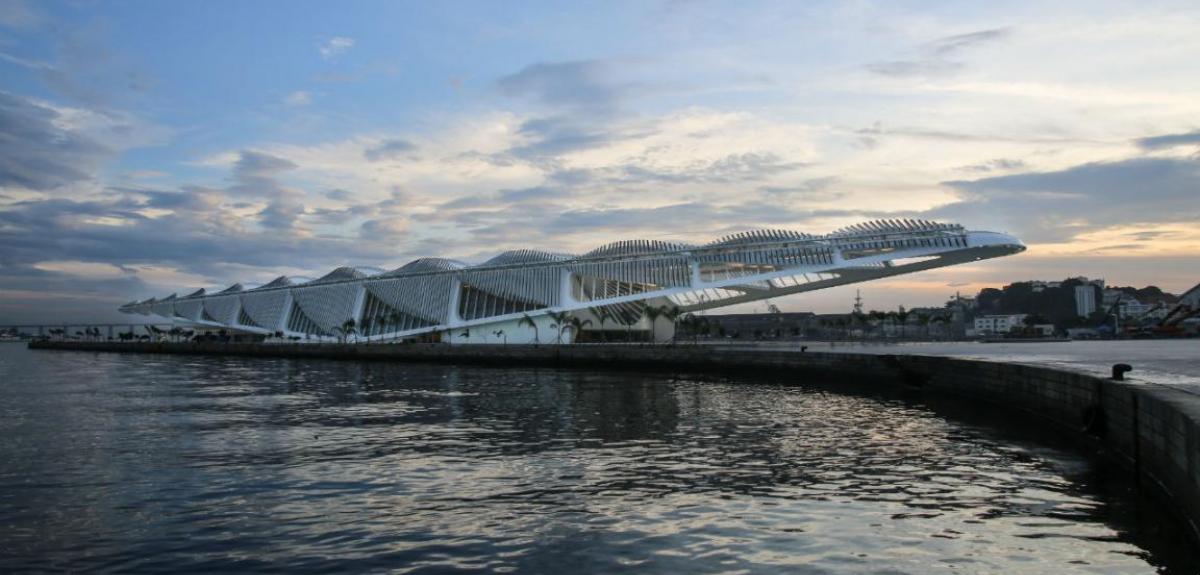MUSEUM OF TOMORROW ACQUIRES SUSTAINABLE CONSTRUCTION CERTIFICATION
Six months after its inauguration in 2015, the Museum of Tomorrow became the first museum in Brazil to be awarded the Gold Label – the second highest level of classification – in the LEED (Leadership in Energy and Environmental Design). The levels are four: Certificate,Silver, Gold and Platinum.
Issued in over 130 countries around the world, the LEED seal is considered the main sustainable building certification for Brazilian developments, where it is officially represented by Brazil Sustainable Construction Council, created in the country in 2007.
To acquire the Gold Label, the project was evaluated from its conception in seven categories:
- Rational use of water;
- Sustainable spaces;
- Quality of the internal environments of the building;
- Innovation and technology;
- The meeting of local needs;
- Reduction, reuse and recycling of materials and resources;
- Energy Efficiency.
Sustainable architecture
One of the anchors of the revitalization of the port region, the Museum of Tomorrow is marked by its sustainable architecture, which dialogues with its content. Signed by the Spanish architect Santiago Calatrava, the project is geared towards the best use of natural resources in the region.
Among its differentials are the technology used to capture solar energy and the use of the waters of Guanabara Bay in the air conditioning system. It is estimated that 9.6 million liters of water and 2,400 Megawatt hours (MWh) of electricity are saved per year – enough power to supply almost 600 homes.
The water of the Bay is captured by the museum with two purposes: to supply the water mirrors and to feed the cooling system, where it is used in the heat exchange.
Rational use of water also occurs in the treatment and reuse of the water from taps, lavatories, showers and rains, as well as the water volume produced from air dehumidification (the "dripping" of the air conditioner) - which alone can render up to 4 thousand liters of water per day.
Solar energy
Part of the energy used in the building is generated by the capture of solar energy: the large steel structures installed in its mobile roof house photovoltaic panels and move like wings to follow the positioning of the sun throughout the day. The project also prioritizes the entrance of natural light. The landscaping, signed by the Burle Marx office, brings native species that require little watering, highlighting the typical vegetation of the coastal region of the city – featuring more than 5,500 square meters of garden areas.
Recycling and reuse of materials
The Museum's concern with the reduction and correct destination of waste for recycling led to measures such as the use of remains of foundation piles in the construction of the sheds used during the construction works. Tons of steel were spared with this action. The selection of materials was also based on environmental criteria, giving preference to materials with recycled components, low toxicity, high durability and which were produced near the construction site, in addition to the use of FSC certified wood.

